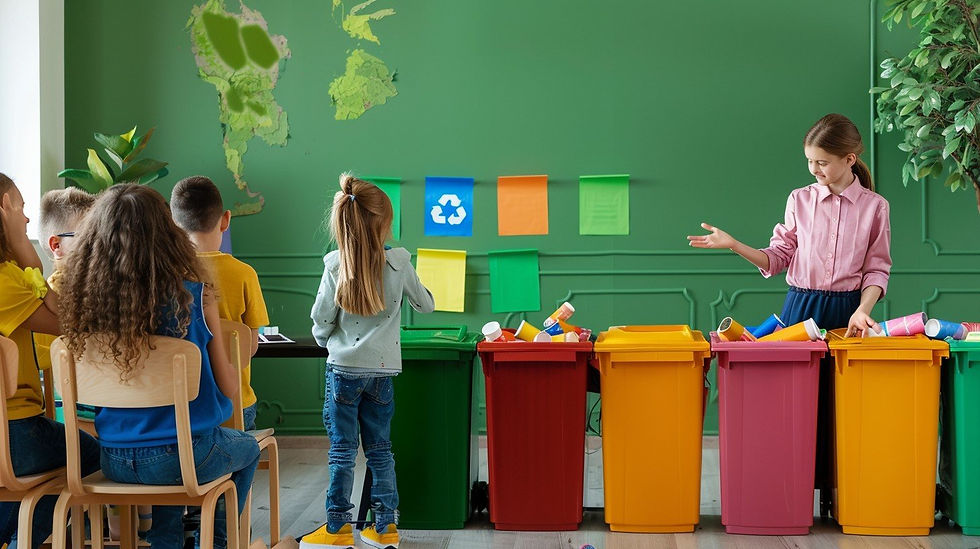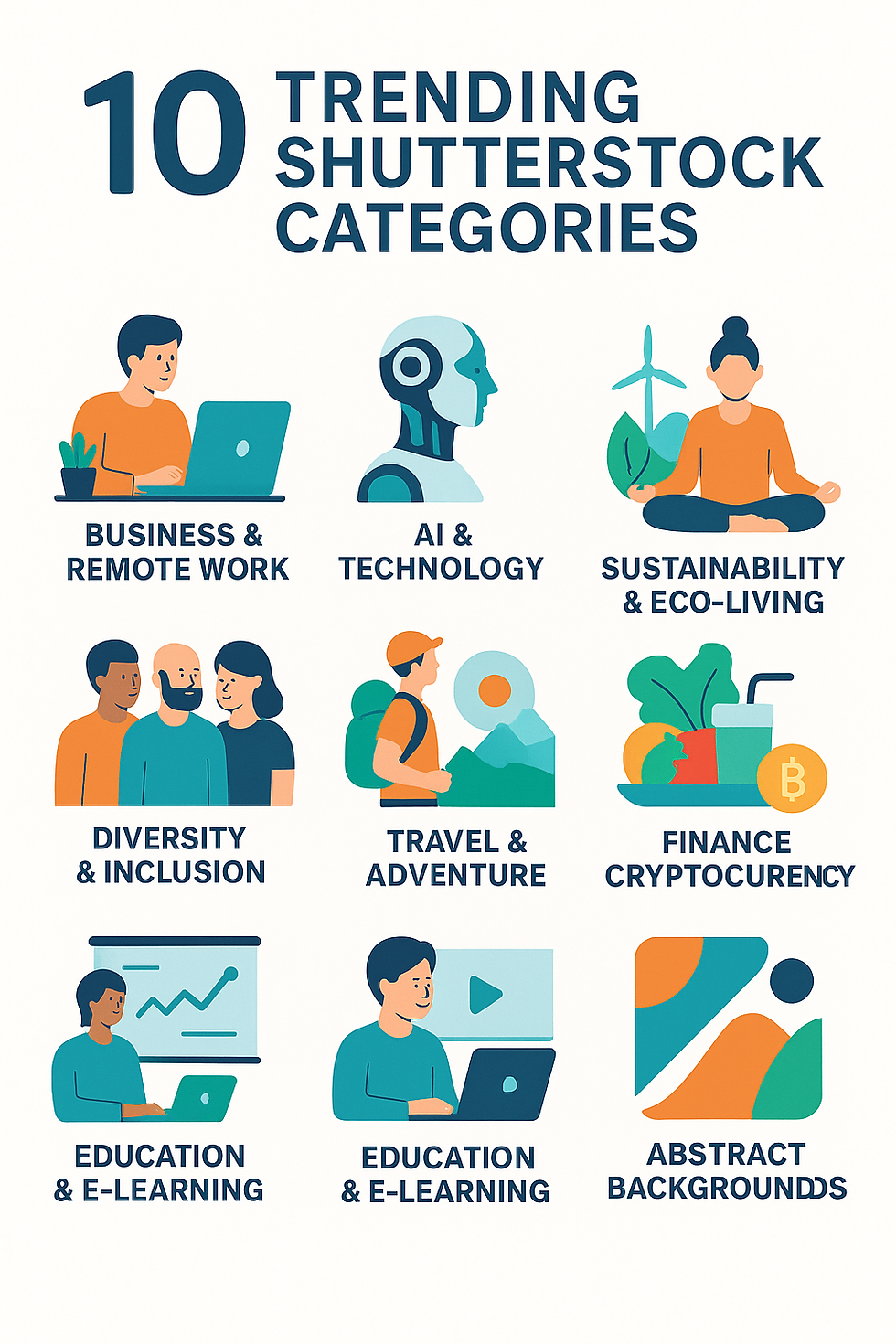7 Reasons Sustainable Living Stock Photos Are in High Demand
- Nikhil Garg
- Aug 20
- 5 min read
Updated: Sep 17
Introduction
In today’s digital-first world, visual content drives conversations, marketing campaigns, and consumer choices. Among the many themes dominating stock photography, one category has consistently been on the rise—sustainable living stock photos. With global audiences becoming more eco-conscious, brands, businesses, and publishers are increasingly seeking visuals that align with themes of sustainability, green living, and eco-friendly lifestyles.
Whether it’s a blogger writing about zero waste practices, a corporation showcasing its corporate social responsibility (CSR) initiatives, or a startup promoting eco-products, stock photos that communicate sustainable living are in higher demand than ever before.

This blog explores seven reasons why sustainable living stock photos are in such high demand—and why photographers should consider focusing their lens on eco-friendly themes.
What is Sustainable Stock Photography?
Sustainable stock photography refers to images that visually represent eco-friendly practices, green living, and environmentally conscious lifestyles. These photos often focus on:
Daily eco-habits: recycling, composting, carrying reusable bags.
Sustainable products: eco-packaging, renewable energy solutions, organic food.
Community efforts: tree-planting, clean-up drives, sustainable farming.
The goal is not just aesthetics—it’s about telling authentic stories that reflect how individuals, businesses, and societies are adapting to global sustainability goals.

Unlike traditional stock images, sustainable stock photos emphasize authenticity, inclusivity, and cultural diversity. Buyers want real-life visuals, not staged stereotypes, to align their campaigns with credibility and trust.
1. Growing Eco-Consciousness Among Consumers
Consumers today care deeply about their ecological footprint. From recycling to supporting eco-friendly products, sustainability is not just a trend—it’s a lifestyle. Brands and publishers need visuals that reflect this shift.
Stock photos showing people carrying reusable bags, cycling instead of driving, or gardening at home connect emotionally with eco-conscious buyers and make campaigns relatable.

Pro Tip: Capture authenticity—avoid staged photos. Show real people in real eco-living contexts.
2. Businesses Promoting CSR and Green Branding
Corporate Social Responsibility (CSR) is no longer optional. Companies highlight their green initiatives in reports, websites, and social media posts.
Photos of solar panels, employees planting trees, or sustainable offices allow businesses to visually communicate their commitment to eco-friendly practices.
For photographers, this means a growing market for stock photos that illustrate corporate sustainability themes.

3. Demand in Education and Awareness Campaigns
Educational institutions, NGOs, and government campaigns rely heavily on visuals to spread awareness about sustainability. Whether it’s about plastic waste reduction, renewable energy, or conservation, stock photos serve as essential storytelling tools.
Photos of classroom recycling projects, community clean-up drives, or eco-friendly signage are in high demand for awareness materials.

📎 Keyword planner for entire year
Packed with actionable tips for Shutterstock success, niche ideas, and automation tools for contributors.
4. Popularity of Zero-Waste and Minimalism Lifestyles
Zero-waste, minimalism, and eco-friendly lifestyles are booming on social media platforms like Instagram and Pinterest. Visuals that highlight plastic-free packaging, refillable bottles, thrifted clothing, and minimal living spaces are widely sought after.
These photos resonate with audiences who want to adopt eco-friendly habits—and inspire others to do the same.

Pro Tip: Highlight small details like glass jars, bamboo toothbrushes, or compost bins to capture authenticity.
5. Rise of Sustainable Products and E-Commerce
The surge in eco-friendly products—from organic skincare to biodegradable packaging—has created an increasing demand for product-focused stock photos.
Brands selling sustainable items need clean, modern, and aspirational visuals that align with their green values. Photographers can focus on flat lays of eco-products, lifestyle shots of sustainable shopping, or packaging close-ups.

6. Government and NGO Initiatives
Sustainability is now a policy priority worldwide. Governments and NGOs run campaigns on topics like renewable energy, sustainable farming, and climate action.
Stock photos showing farmers using eco-techniques, wind farms, community recycling programs, and water conservation projects are frequently used in brochures, websites, and social initiatives.

📎 Keyword planner for entire year
Packed with actionable tips for Shutterstock success, niche ideas, and automation tools for contributors.
7. Increasing Relevance in Future-Focused Marketing
The future of marketing is green. As climate change and sustainability dominate conversations, businesses across industries—from travel to fashion—are embedding eco-conscious messages in their brand identity.
This means sustainable living stock photos will continue to stay relevant and grow in demand.
Visuals like electric vehicles, eco-friendly cities, and young people embracing green practices will become staples for future marketing strategies.

What Photographers Should Keep in Mind
When shooting sustainable living stock photos, focus on:
Authenticity: Avoid cliché “green” imagery (like staged handshakes in front of wind turbines).
Diversity: Showcase people from different cultures embracing eco-living.
Details: Highlight small actions—composting, reusing, recycling.
Trends: Keep up with new sustainability practices (e.g., plant-based diets, carbon-neutral living).
By following these guidelines, your photos will stand out in a competitive but growing niche.

What Photographers Should Be Aware Of
While shooting sustainable living themes, photographers should remain mindful of:
Avoiding clichés: Overused imagery (like lightbulbs with plants) no longer sells well.
Cultural sensitivity: Eco-living looks different across countries—don’t portray it from only one perspective.
Accuracy: Misrepresenting products as eco-friendly (greenwashing) can hurt credibility.
Trends vs. Timelessness: While trends like plant-based diets are hot, evergreen themes like recycling and renewable energy always stay in demand.
By keeping these points in mind, photographers can create content that not only sells but also contributes meaningfully to the global sustainability movement.
Future of Sustainable Stock Photos
The demand for sustainable living stock photos is only going to grow. As climate change, green energy, and eco-friendly lifestyles become central to policies and marketing worldwide, stock libraries will prioritize content that resonates with these themes.
In the future, we’ll see increased demand for:
Green technology visuals (electric vehicles, carbon-neutral cities, smart homes).
Diverse representation of eco-living across different cultures.
Authentic storytelling that moves away from staged imagery to genuine, real-life practices.

For photographers, this means sustainability isn’t just a niche—it’s the future of stock photography. Building a portfolio around eco-themes ensures long-term relevance and steady sales.
📎 Keyword planner for entire year
Packed with actionable tips for Shutterstock success, niche ideas, and automation tools for contributors.
TL;DR
Sustainable living stock photos are trending because:
Growing eco-consciousness among consumers.
Businesses promoting CSR and green branding.
Demand in education and awareness campaigns.
Popularity of zero-waste and minimalism lifestyles.
Rise of sustainable products and e-commerce.
Government and NGO initiatives.
Increasing relevance in future-focused marketing.

Conclusion
The demand for sustainable living stock photos isn’t just a passing trend—it’s a reflection of global priorities. As individuals, organizations, and governments push for a more eco-friendly future, photographers who create authentic, meaningful visuals will see increased opportunities in stock marketplaces.
If you’re looking to future-proof your portfolio, now is the perfect time to capture the spirit of sustainable living.

FAQs| Sustainable Living Stock Photos
Q1: What subjects sell best in sustainable living stock photos?
Ans: Everyday eco-habits like recycling, reusable products, urban gardening, and renewable energy.
Q2: Are staged eco-themed stock photos effective?
Ans: No. Buyers prefer authentic, realistic images that tell genuine sustainability stories.
Q3: How do I make my eco-photos stand out?
Ans: Focus on detail, diversity, and modern eco-trends like minimalism or zero waste.
Q4: Will demand for sustainable living stock photos grow in the future?
Ans: Yes—sustainability is a long-term global priority, making it one of the most evergreen stock niches.
📎 Keyword Planner for Entire Year for shutterstock

Packed with actionable tips for Shutterstock success, niche ideas, and automation tools for contributors.




Comments